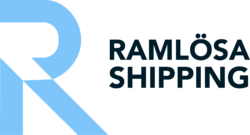2024-12-11

Co-CEO and CFO Moritz Fuhrmann
"Our position as the largest tonnage provider in the feeder segment, combined with our focus on sustainability and fleet renewal, ensures that MPC Container Ships remains a market leader poised for long-term growth."
For those who are not familiar with MPC Container Ships, could you tell us a bit more about your company, what you do, and the role you play in the container shipping industry?
MPCC was founded in 2017 with a counter-cyclical asset strategy: buying vessels at low valuations to capitalize on market cycles. Following the surge in charter rates during the post-COVID era, our model transitioned from growth-oriented to value-focused, emphasizing shareholder returns through dividends. Recognizing the need to stay competitive, we have initiated a fleet renewal process, selling older vessels and reinvesting in younger, more efficient tonnage. Today, we are the largest tonnage provider globally in the feeder segment, leveraging our scale and operational expertise to maintain market leadership.
We own container vessels with a fleet of over 60 vessels, focusing on feeder vessels ranging from 1,000 to 6,000 TEU (twenty-foot equivalent units). For context, larger container vessels can be as large as 24,000 TEU. Our vessels primarily operate in intra-regional trades, connecting major transshipment hubs like Rotterdam, Shanghai, and Singapore to smaller regional ports, which complements the operations of larger vessels that dominate long-haul routes.
Our main customers include global shipping liners such as MSC, CMA, Maersk, and Hapag Lloyd, who charter our vessels on a time-charter basis. Current market conditions have enabled us to secure charters lasting two to three years, offering strong income visibility.
Could you describe how MPC Container Ships meets customer needs in maritime logistics? What are your key competitive advantages compared to other players in the industry?
One of our key advantages is our scale, combined with a lean organizational structure that allows us to respond swiftly to industry changes. The growing focus on sustainability has introduced new regulations and heightened customer expectations for greener, more efficient vessels. This has influenced our fleet renewal strategy, enabling us to meet these demands effectively.
We continuously review our portfolio to identify and replace legacy vessels that are no longer aligned with customer needs or regulatory requirements. In addition to ordering newbuilds, we’ve acquired modern secondhand vessels to stay ahead. Our scale allows us to engage in deeper, more strategic dialogues with liner companies, discussing not only vessel charters but also co-investments in alternative fuels and propulsion technologies like LNG, methanol, and ammonia.
This forward-looking approach has positioned us as a preferred partner for global shipping lines. For example, we recently structured a 10-vessel charter deal with Maersk, leveraging our large fleet and availability. This ability to provide tailored, strategic solutions sets MPCC apart in the market.
You recently expanded your fleet by selling and purchasing specific vessels. Could you explain the strategy behind these transactions and how they impact your long-term development?
Our asset strategy revolves around constant fleet renewal. We sell older vessels with less favorable designs or those that may not comply with future regulations, reinvesting in more modern tonnage. This approach aligns closely with our ESG strategy, ensuring compliance with upcoming environmental standards.
When acquiring new vessels, timing within the market cycle is critical. For instance, while vessels may be more affordable during a market downturn, securing long-term charters can be challenging. Conversely, during a market upswing, vessel prices are higher, but long-term charters provide income visibility and mitigate risks. For example, we recently acquired four 3,800 TEU vessels paired with three-year charters, balancing high acquisition costs with predictable cash flows.
Our newbuilding program further reflects this strategy. We have five new vessels, with two already delivered and three scheduled for delivery. Each is tied to long-term charters ranging from seven to fifteen years, ensuring financial stability. This disciplined approach has enabled us to increase our revenue backlog by over 30% in 2024, providing strong visibility for 2025 and beyond.
During Q3, you reported increased revenues and strong demand for your services. Could you provide some insight into what is driving this growth and how you plan to capitalize on it moving forward?
The demand growth has been driven by multiple factors. Geopolitical events in the Red Sea disrupted shipping routes, forcing liner companies to reroute vessels around the Cape of Good Hope, adding significant transit times. This disruption alone has increased demand by an estimated 11-12%. Combined with strong global trade growth of 5-6% in 2024, this has absorbed much of the new vessel supply entering the market.
We’ve capitalized on this favorable market by securing long-term charters and expanding our fleet. Our strategy focuses on locking in vessels for longer durations, enhancing revenue visibility, and structuring asset acquisitions to align with charters. This dual approach ensures we continue to capitalize on market opportunities while mitigating risks.
MPC Container Ships has a clear sustainability strategy tied to the global shipping industry. Could you tell us more about how you’re working to reduce your environmental impact and the goals you aim to achieve in the coming years?
We have updated our greenhouse gas reduction targets, aiming for a 45% reduction by 2030 compared to the IMO’s 40% target. Like many in the industry, we’ve set a long-term goal of net zero by 2050, though this depends on the availability to alternative fuels and supporting infrastructure.
Our strategy includes three key initiatives:
- Investing in new, efficient vessels
- Acquiring modern secondhand vessels
- Retrofitting existing ships with technologies like advanced propellers and silicon paints. (Retrofits alone have improved efficiency by 15-22% on some vessels.)
These measures position us well to achieve our ambitious sustainability targets while reinforcing our commitment to responsible operations.
Where do you see MPC Container Ships in three years, and what are the key factors in achieving that vision?
In three years, we aim to remain the largest tonnage provider in the feeder segment while enhancing our sustainability credentials. This vision will require ongoing investments in fleet renewal and strategic partnerships with liner companies, focusing on co-developing sustainable technologies.
Maintaining our scale is essential to staying competitive and relevant. We anticipate operating a fleet of approximately 60 vessels, ensuring we have the capacity to meet customer needs while continuing to innovate and adapt to market demands.
Could you mention three reasons why MPC Container Ships is an attractive investment today?
Firstly, our robust revenue backlog provides strong stability and visibility for investors, covering over 85% and 57% of operating days in 2025 and 2026 respectively. This backlog shields us from short-term market volatility.
Secondly, we have an exceptionally strong financial position, with low leverage and two-thirds of our fleet debt-free. This flexibility allows us to seize growth opportunities while managing risks effectively.
Thirdly, our position as the largest tonnage provider in the feeder segment, combined with our focus on sustainability and fleet renewal, ensures that MPC Container Ships remains a market leader poised for long-term growth.




